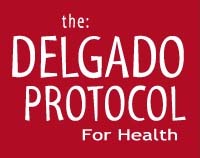Preventing Chronic Diseases: The BETTER Ways & Tools
In the realm of preventive healthcare, traditional screening tools often fall short, identifying diseases only in their advanced stages. Addressing the limitations of conventional methods, two non-invasive screening tools stand out, allowing early detection of internal imbalances signaling the onset of specific disorders. Embracing these techniques empowers individuals to make informed lifestyle changes and curb the progression of potential diseases.

1. Thermography: An Early Warning System
Thermography, utilizing infrared light to measure temperatures and energy exchange, emerges as a cutting-edge screening tool. As an FDA-approved and affordable option, it surpasses radiation-based devices like mammograms, X-rays, and CAT scans in safety and efficacy.
Firstly, it is safe and non-toxic; it does not damage the cells and DNA and promotes cancer as radiation screening does. It’s also non-invasive and can be used as a preventative health tool because the heat patterns indicate inflammation and pathologies before they develop into a full-blown disease.
Thermography for Breast Cancer Detection: Beyond Mammograms
In the context of breast cancer detection, thermography proves superior to mammograms, avoiding false positives and harmful radiation exposure. Studies indicate a 15% higher breast cancer rate in women regularly using mammograms. Thermography identifies precursors such as inflammation, excess estrogen, lymphatic congestion, and breast imbalances.
[Explore the benefits of thermography over mammography: mammography-vs-thermography]
2. Blood Microscopy: Unveiling Health through Blood Cells
Blood microscopy, a simple and safe procedure, involves examining a small blood sample under a microscope. Magnified images provide insights into the shape, size, viscosity, and consistency of blood cells, offering valuable information about one’s health status.
Blood Microscopy to Assess Oxidative Damage: A Glimpse into Cellular Health
Blood microscopy plays a crucial role in assessing oxidative damage, a key factor in various chronic diseases. By quantifying free radical damage in dry blood samples, it allows individuals to take proactive measures to reverse oxidative stress before it manifests into a full-blown disease.
Key Lifestyle Factors for Healthy Screenings
Ensuring the effectiveness of thermography and blood screenings involves adopting a holistic approach to health. Nutrition plays a pivotal role, with antioxidant-dense, whole foods and plant-based diets being instrumental in reducing inflammation and oxidative stress. Additionally, implementing the following steps contributes to a comprehensive disease prevention strategy:
11 Additional Steps for Preventing Chronic Disease
- Identify and reverse nutrient deficiencies (most of us have them because our soils are nutrient-depleted, and our digestive systems are compromised)
- Use high-quality supplements tailored towards your specific biochemical requirements (for a range of high-quality, physician-formulated supplements: delgadoprotocol.com)
- Identify and reverse hormone imbalances
- Exercise regularly and include cardio, strength training, and flexibility-building activities
- Reduce stress
- Optimize sleep
- Protect yourself from radiation (keep the cell phone away from your body when not in use, take an iodine supplement such as Rad Iodine, etc.)
- Reprogram yourself for love and positivity (studies show the longest-living individuals are optimistic, happy people)
- Formulate deep, loving relationships
- Maintain a sense of purpose and social connectivity
- Utilize the power of the mind, with tools such as meditation, visualization, NLP therapy, hypnosis, EFT, positive affirmations, and LFC glasses
*The above steps are based on the web class




